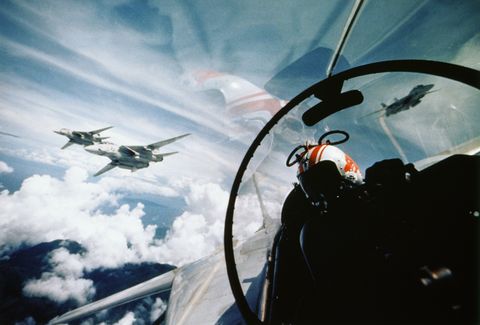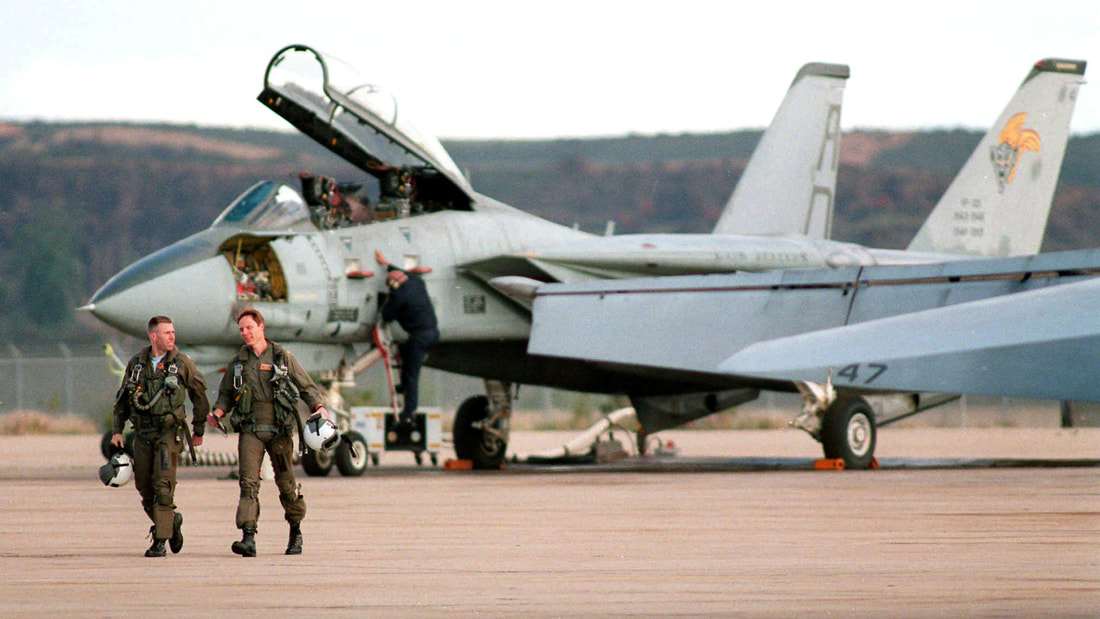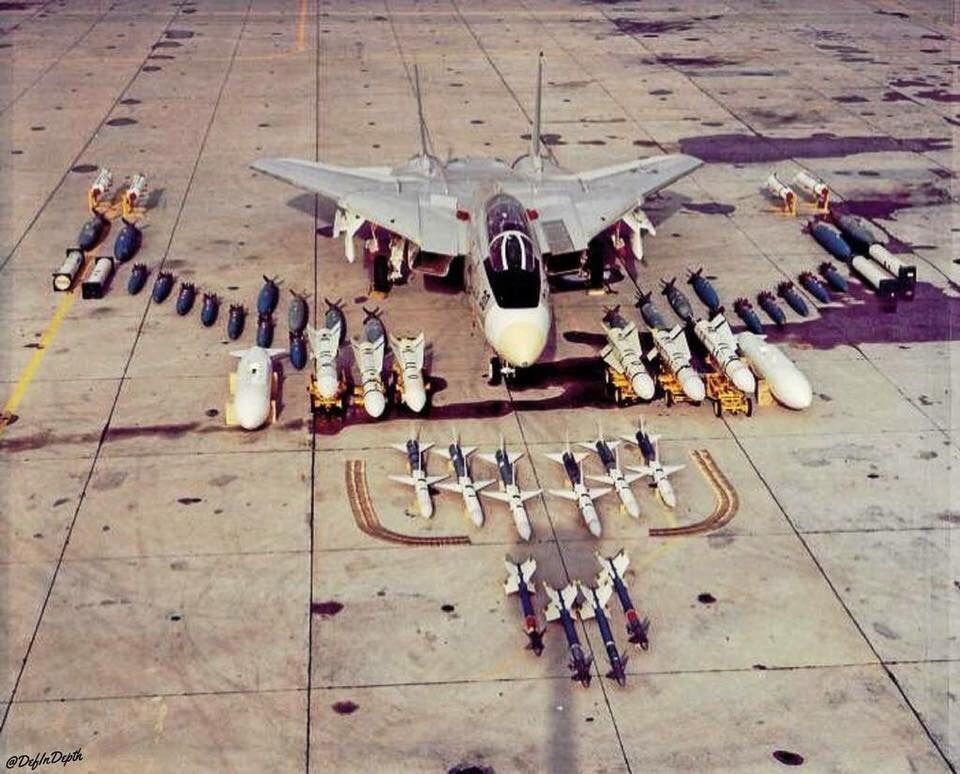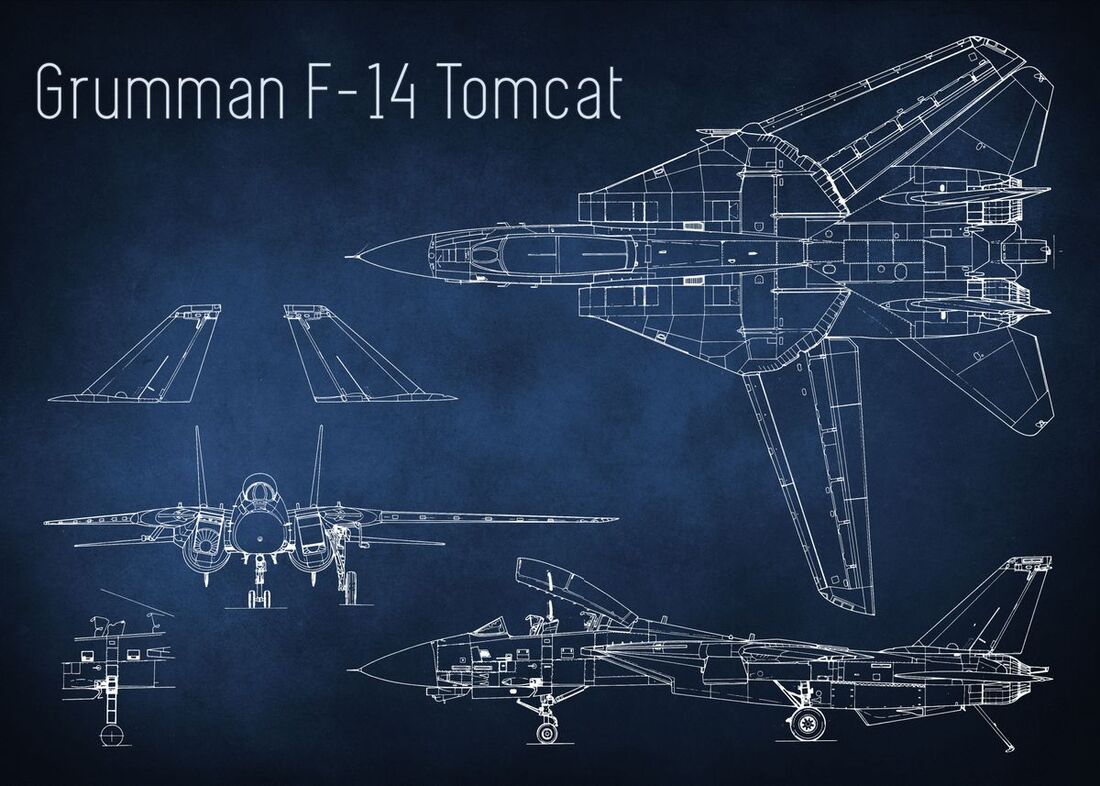|
The Tomcat chalked up its extraordinary combat record in the service of one of the United States’ bitterest rivals, Iran Here’s What You Need to Remember: However, the Navy chose instead to field the F-18E/F Super Hornet. The Hornet airframe was not quite as optimized for air-to-air combat, but still delivered excellent performance, was based on fly-by-wire technology, and cost less money and time to fly and maintain. The choice between investing in a Super Tomcat or fielding the Super Hornet inevitably involved a trade-off, and the Super Hornet simply came out ahead in the Navy’s calculus. And the Tomcat was cool—entering service in 1975, it was arguably the first operational fourth-generation jet fighter that successfully combined the characteristics of high speed, high maneuverability, and sophisticated avionics and armament that are now standard today. However, there’s a profound irony in the Tomcat story. The Tomcat is one of the U.S. fighters that has seen the most sustained and intense air-to-air combat of its generation. And yet, American F-14s only shot down five hostile aircraft. The Tomcat, however, chalked up its extraordinary combat record in the service of one of the United States’ bitterest rivals, Iran. To understand why the Tomcat was so revolutionary, one must consider the context of its time. The U.S. Navy then operated the F-4 Phantom—a heavy aircraft powerful engines and sophisticated electronics for the time, but a bit of a clunker in a dogfight. The Navy was forced by Defense Secretary Robert McNamara into pursuing the troubled TFX program to create a plane that would serve both the Air Force and Navy. While the Air Force was able to adapt the TFX into the F-111 bomber, Navy Admiral Thomas “Tomcat” Connelly testified before Congress that the TFX was a disaster for carrier operations. The TFX carrier fighter was cancelled, and the Navy got to pursue its own design. The Navy’s number one priority was to have a “fleet defense fighter.” While the U.S. Navy outgunned its Soviet counterpart, experience in World War II had demonstrated aircraft were a greater threat than opposing ships. Were the Cold War to have gone hot, formations of Soviet bombers would have descended on U.S. carrier task forces and unleashed enormous volleys of long-range cruise missiles from more than a hundred miles away. A naval task force’s air defenses could shoot down only so many aircraft and cruise missiles. The Navy needed fast-moving interceptors to range ahead and take out as many of the bombers as possible, preferably at long distances using sophisticated missiles of their own. Such a conflict would have been a brutal contest of attritional arithmetic. However, recent combat experience in Vietnam had shown that U.S. Navy fighters also needed to be capable of winning air superiority—that is, defeating an opponent’s fighter planes. Dogfights between American F-4 Phantoms and North Vietnamese MiG-21s had demonstrated that high speed and long-range missiles were not enough—an air superiority fighter needed to be maneuverable as well. While the U.S. Navy Top Gun school demonstrated that using proper Air Combat Maneuvering tactics made a big difference, having a more agile plane than the F-4 was still desirable. The Tomcat’s twin TF30 turbofans allowed them to attain speeds of Mach 2.34. However, they provided inferior thrust to the F-15, which came into service shortly after the Tomcat, and the fan blades and compressors were prone to catastrophic breakdowns. Thus, later-model Tomcats were refitted with the F110 engines used in the F-16, causing a dramatic improvement in the Tomcat’s thrust-to-weight ratio. The Tomcat’s nose held an AWG-9 X-band pulse-doppler radar with one of the first microprocessors ever, one of the most powerful fighter-mounted radars at the time. The AWG-9 could detected bombers up to one hundred miles away, was still effective against targets flying at low altitude, and was capable of tracking twenty-four contacts at a time. The AWG-9 also had sufficient resolution to track cruise missiles and shoot them down. The Tomcat was also the only Western fighter of its generation to have an internal Infrared Search and Track sensor, the ALR-23. This was later replaced by an electro-optical sensor with a sixty-mile range that integrated its data with the AWG-9. Most importantly, the AWG-9 could provide guidance for the Tomcat’s powerful AIM-54 Phoenix missiles, up to four of which were normally mounted under the belly. These were central to the F-14’s ability to defend the fleet. One of the most sophisticated and expensive air-to-air missiles fielded by the United States, the Phoenix could hit targets over 120 miles distant traveling at speeds up to Mach 5. The sophisticated radar and missiles were operated by the backseater on the F-14, known as the Radio Intercept Officer (RIO). The Tomcat could theoretically fire up to six Phoenix missiles in rapid succession at different targets—an ability that was actually tested once. The result? Four hits out of six launches. Tomcats usually carried larger numbers of more conventional AIM-9 Sidewinder heat-seeking missiles and medium-range AIM-7 Sparrow radar-guided missiles. The F-14 also had a twenty-millimeter cannon, a feature Navy Phantom fighters lacked. However, like the early models of the F-15 entering in service at the time, the F-14 was a pure air-to-air platform and was not built to carry air-to-ground munitions. All in all, the Tomcat was fast enough to intercept Soviet bombers, had radar and missiles capable of detecting and shooting them down over long distances, and the maneuverability to dogfight and defeat agile enemy fighters. This combination of capabilities became the gold standard of a new generation of aircraft including the F-15 and Su-27. Additionally, the Tomcat of course had the reinforced landing gear and arrestor hook necessary for carrier operations. The Navy chose to skip the prototype phase, so production of the F-14 began in 1969 in Bethpage, in Long Island, New York. A total of 712 were ultimately produced through 1991. The Tomcat entered operational service in 1974 with the VF-1 and VF-2 squadrons on the USS Enterprise. Some even flew cover for the evacuation of Saigon in 1975, though none actually saw combat during the Vietnam War. Over the course of the Cold War, Navy F-14s routinely intercepted Soviet bombers and maritime patrol planes shadowing U.S. carrier groups, and frequently posed for photo ops with their Communist counterparts. Frequent cat-and-mouse games between Libyan aircraft and Tomcats on freedom-of-navigation missions proved considerably tenser, with numerous near launches of weapons—and several incidents in which they were released. In August 19, 1981, two F-14s flying with VF-41 on board the USS Nimitz were escorting an S-3 Viking patrol plane that had crossed into contested airspace when they were intercepted by two Libyan Air Force Su-22s. One of the Su-22s fired an AA-2 heat-seeking missile at the lead Tomcat, which successfully evaded. The Tomcats then returned fire with Sidewinders and splashed both Libyan fighters, in what became known as the Gulf of Sidra incident. Eight years later in January 1989, two Libyan MiG-23s confronted F-14s from the USS Kennedy, again over Sidra. This time, the American fighters fired first, and after missing with several Sparrow missiles, shot down both Libyan aircraft with a Sparrow and a Sidewinder. Navy F-14s also provided air cover for the many air strikes undertaken by the U.S. Navy in the Gulf during the 1980s, and also were involved in forcing down an Egyptian airliner carrying PLO agents that had earlier hijacked the Italian cruise liner Achille Lauro and murdered an elderly Jewish man. Back in 1987, the Navy began received thirty-eight F-14B Tomcats, and also upgraded forty-eight F-14As to the new standard. The F-14B featured the same F110 engines as on the F-15, which significantly improved the Tomcat’s thrust-to-weight ratio. The AWG-9 radar was replaced with a superior digital version, the APG-70. New ALR-67 countermeasure systems enhanced the F-14’s ability to evade hostile missiles. GPS was included to supplement the inertial navigation systems formerly relied upon. In 1991 the last variant of the Tomcat, the F-14D came into service with a digital “glass” cockpit and APG-71 radars and better integration of air-to-ground munitions. Over the opposition of Secretary of Defense Dick Cheney, thirty-seven of the new type were manufactured and eighteen refitted from F-14As. During the 1991 Gulf War, Navy Tomcats largely missed out on the combat. Relegated to patrol duties, the F-14s lacked systems to definitively confirm the identity of hostile aircraft at long range and were hampered by a lack of coordination between the Navy and Central Command. Iraqi fighters also shied away from engagements with Tomcats. The Tomcat’s only aerial victory in the war, and the last it achieved in U.S. service, was a hapless Iraqi Mi-8 transport helicopter. One Tomcat did get shot down by an old Iraqi SA-2 surface-to-air missile, however; one of the crew was rescued and other was captured and released at the end of the conflict.
With the passing of the Cold War, massive aerial battles no longer seemed to be on the table, and a pure air-superiority airplane was suddenly short on stuff to do. Tomcats did patrol the no-fly zone over Iraq and Yugoslavia and escorted bombers during Operation Desert Fox. However, the Navy began modifying Tomcats to serve in the ground-attack role by mounting LANTIRN pods equipped with a targeting laser. Tomcats performed their first bombing mission over Bosnia to in 1995, and later made additional airstrikes over Iraq and Yugoslavia. In their final two wars, the intervention in Afghanistan and the 2003 U.S. invasion of Iraq, Navy Tomcats dropped hundreds of thousands of pounds of bombs, including GPS-guided JDAMs. In the latter conflict, Tomcats provided air support for a mixed force of Kurdish peshmerga fighters and U.S. Special Forces that defeated a company of Iraqi armor in the Battle of Debecka Pass—though tragically, a target misidentified from the ground led the F-14s to accidentally kill many peshmerga fighters. Other targets hit by F-14s included the Salman Pak radio relay transmitter facility used by the Iraqi propaganda ministry and Saddam Hussein’s personal yacht. This brings us to the sad fate of the retired Navy F-14s. Initially placed in storage, the Tomcats were literally shredded and crushed so as to prevent them from serving as a source of spare parts for Iran. The Tomcat entered service shortly before the F-15 Eagle, an aircraft poised to remain in service for years to come. Did the Tomcat need to go so early? In fact, several different “Super Tomcats” were proposed to the Navy that would have thoroughly modernized the aging avionics and made it fully capable as a multirole fighter. One variant, the Attack Super Tomcat 21, would even have featured an advanced AESA radar, vector-thrust engines (the engines nozzles could change pitch to improve maneuverability), and the ability to supercruise at Mach 1.2—that is, sustain flight speeds over the speed of sound without using the afterburner. However, the Navy chose instead to field the F-18E/F Super Hornet. The Hornet airframe was not quite as optimized for air-to-air combat, but still delivered excellent performance, was based on fly-by-wire technology, and cost less money and time to fly and maintain. The choice between investing in a Super Tomcat or fielding the Super Hornet inevitably involved a trade-off, and the Super Hornet simply came out ahead in the Navy’s calculus. Nonetheless, the Tomcat did prove itself to be one of the great American fighters of its era—in the hands of both the U.S. Navy and the Iranian Air Force.
0 Comments
Leave a Reply. |
Send us an email at [email protected] if you want to support this site buying the original Division of Aero Patch, only available through this website!
All
|






 RSS Feed
RSS Feed